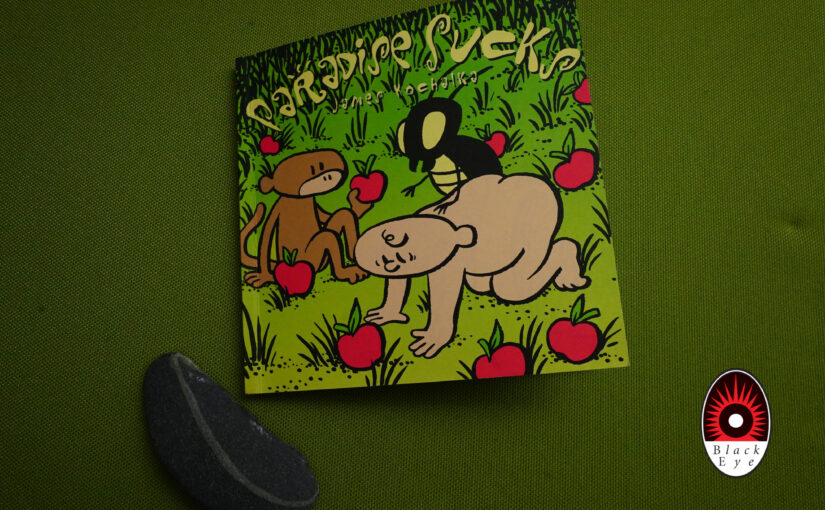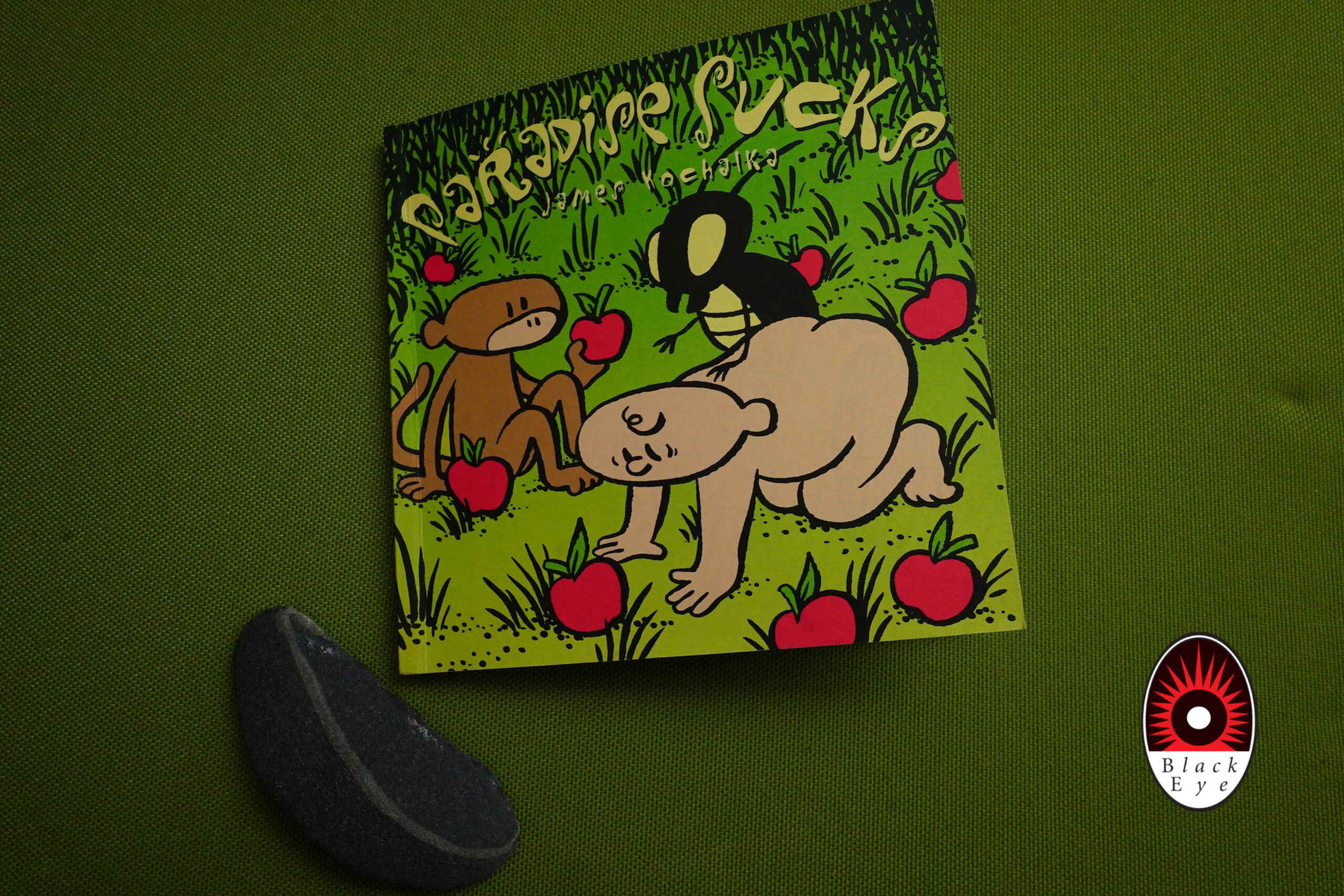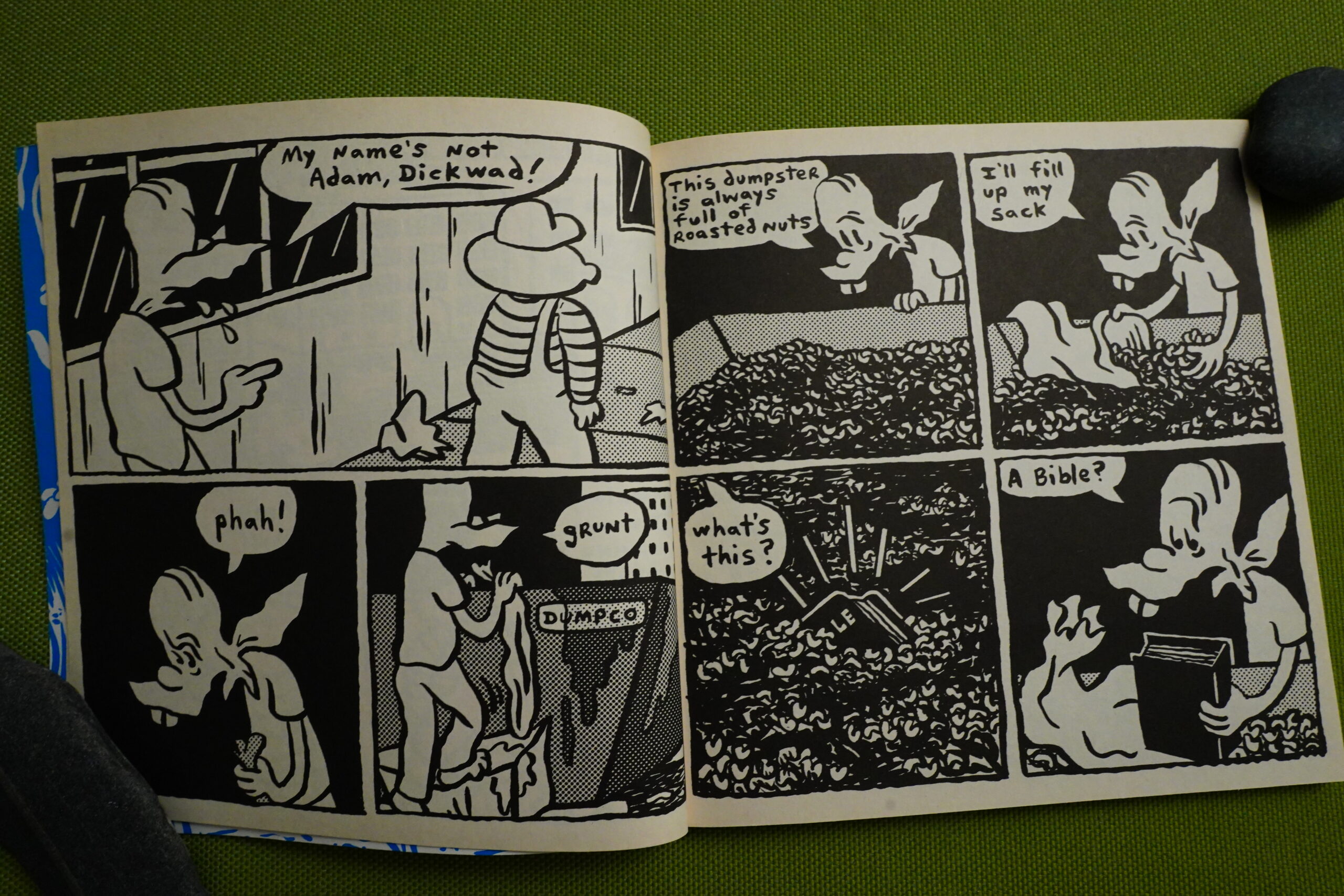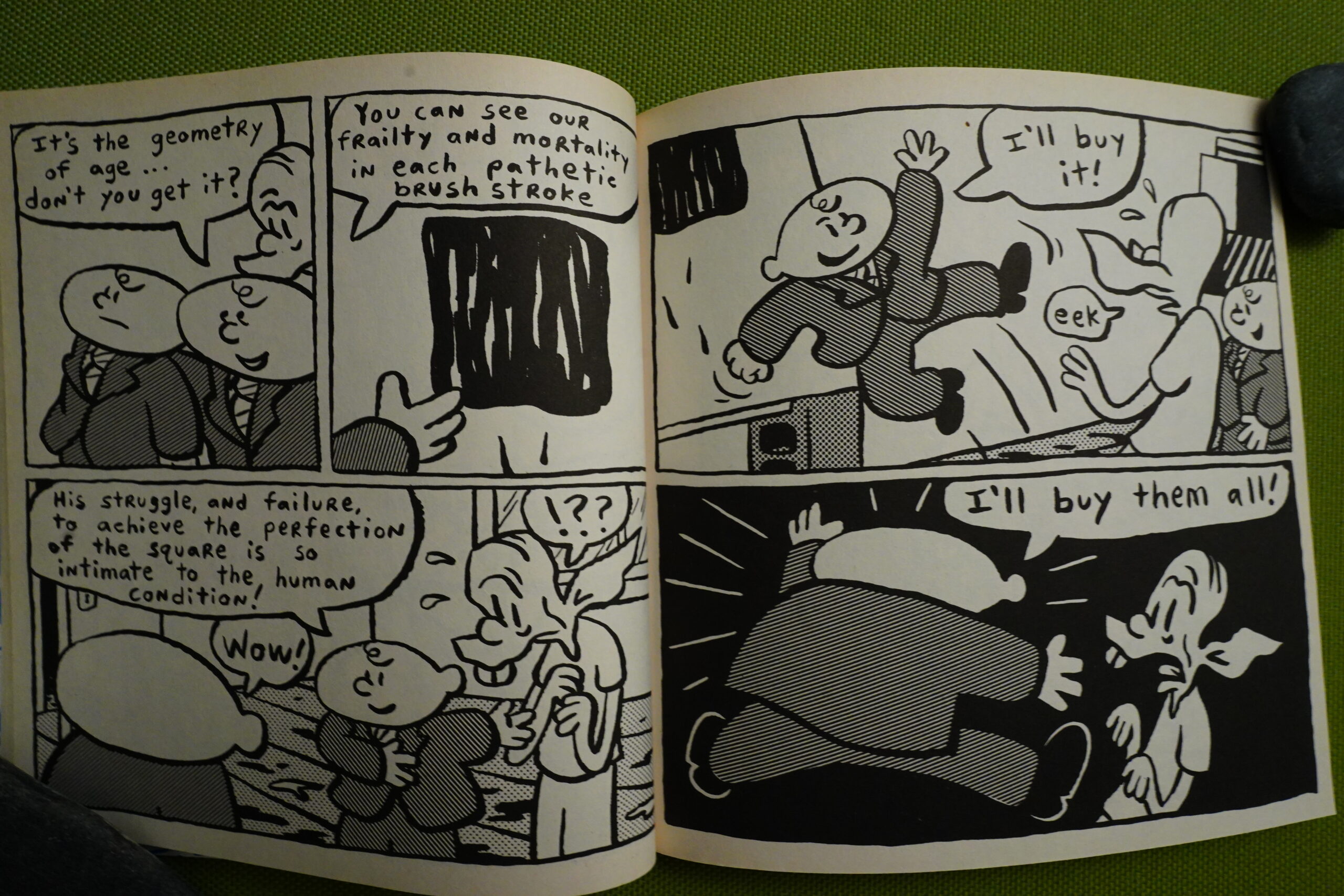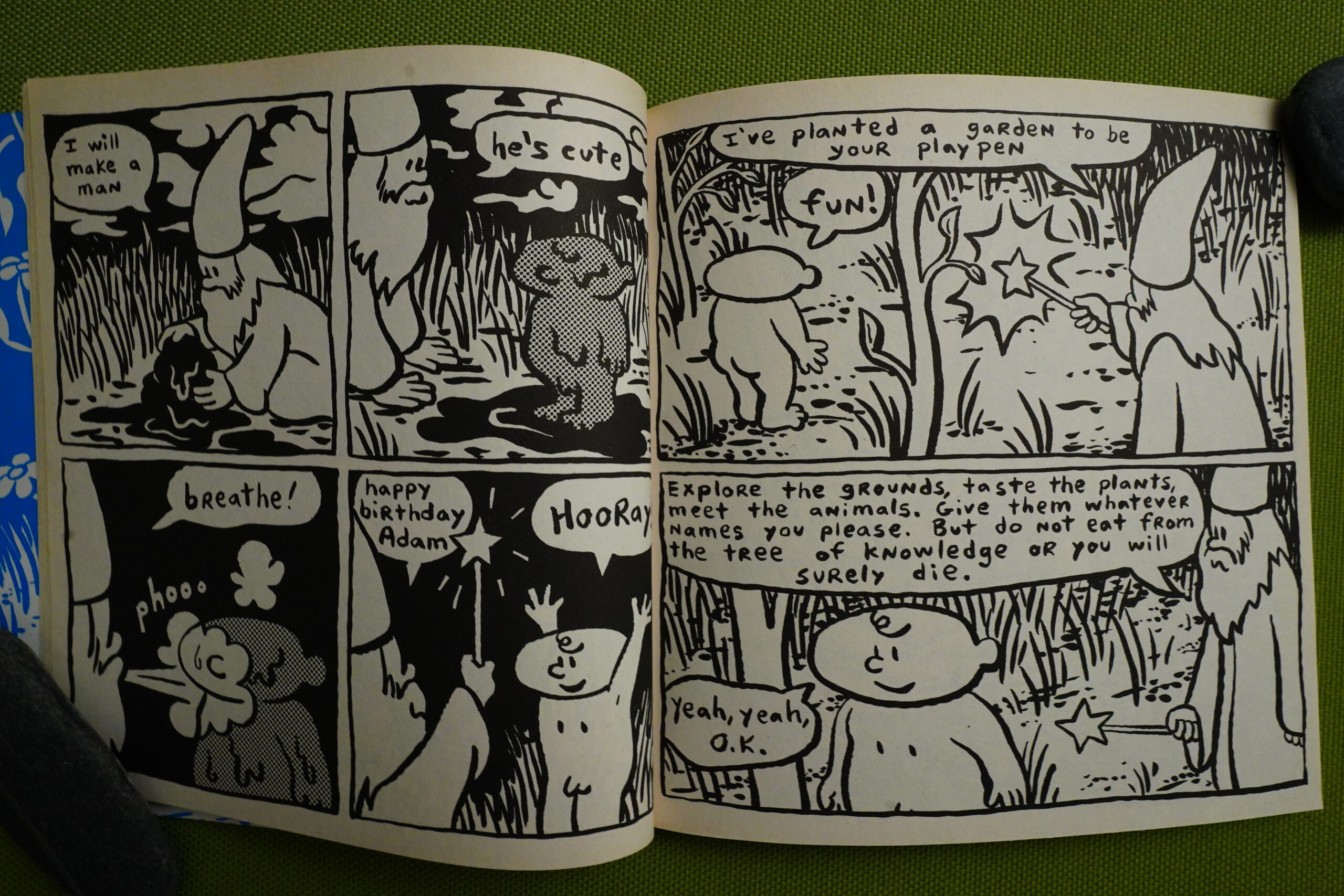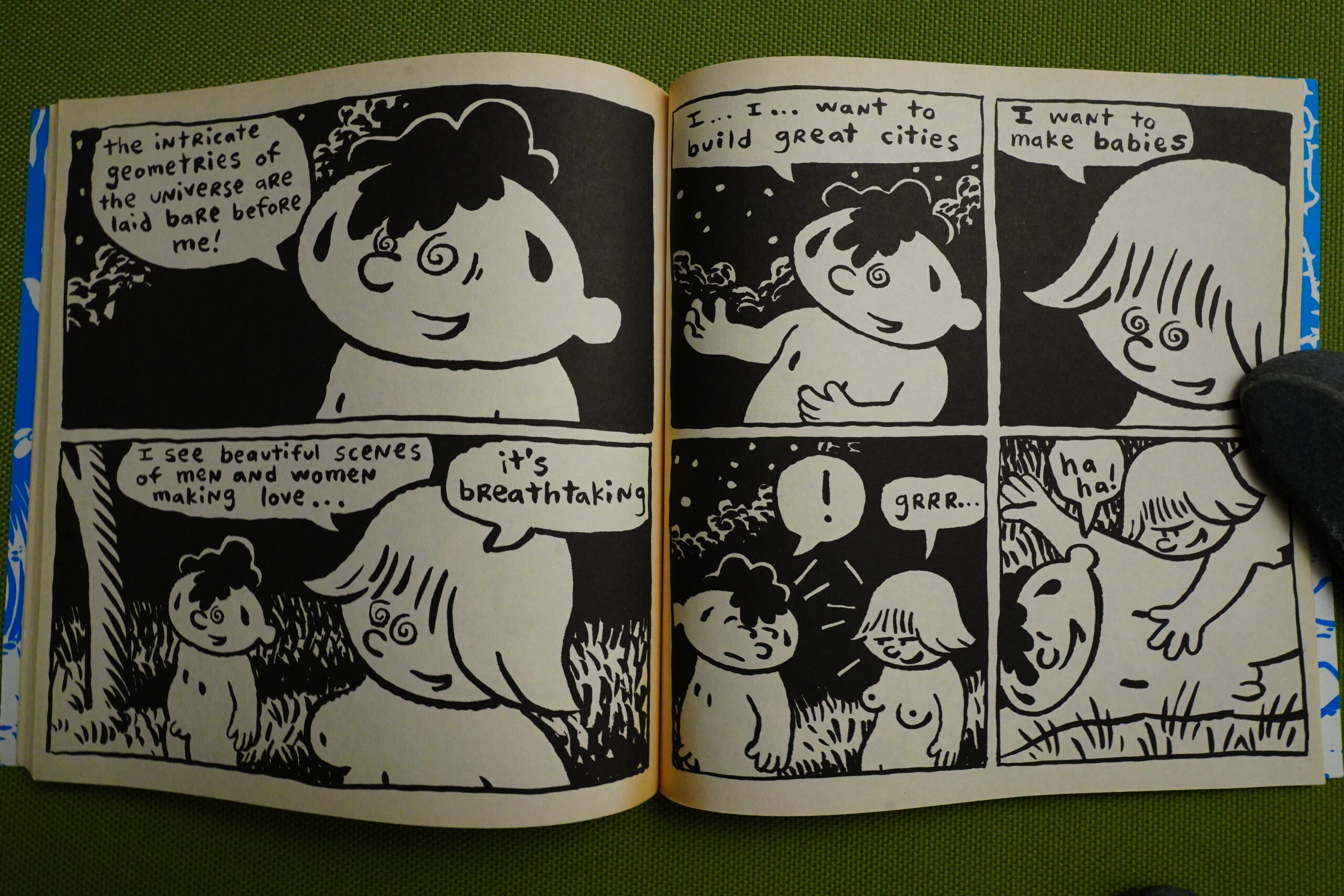Paradise Sucks (1997) by James Kochalka
This is another book that’s somewhat unusual for Black Eye to have been publishing. I bought it at the time, but it’s not until I got prepared to do this blog series that I realised that it wasn’t an Alternative Comics (or something) book.
It’s printed on pleasingly off-white paper in a cute, small format.
The book is pretty oddly structured — we start off following this dumpster diver that finds a bible…
… and then some rich guys stop by to buy his geometrical artwork. I thought that this was going to lead off into yet another rant against modern art (the traditional bête noires or comics artists), but that didn’t really go anywhere, because…
… the rest of the book is about Adam and Eve and stuff (and the artist wanders into that story).
I’m not sure at all what Kochalka meant to achieve with this book — perhaps it’s more fun if you’re religious (and then perhaps these depictions of Adam and Eve would be all sacrilegious and stuff)? — but for me it’s just an “uhm?” I mean, I like Kochalka, and I have at least a couple dozen of his books. But this one doesn’t really go anywhere.
Kochalka’s artwork is fun, though.
Christopher Brayshaw writes in The Comics Journal #198, page #42:
Last year when I reviewed one Of James
Kochalka’s contributions to an eminently
forgettable small press anthology, I had
some harsh criticisms of his unpolished
art, non-stop sentimentalization, and ob-
noxious self-promotion. These tendencies
are still pronounced in the self-acclaimed
superstar’s most recent major work, but
along with them comes much subtler char-
acterization, more refined drawing, and
some surprisingly mature pacing. While
these new-found improvements aren’t
enough to convert me to Kochalka any
time soon, they do indicate that, despite
his witless refrain of “Who needs craft?” in
the Journars letters pages, Kochalka’s
aware ofhis shortcomings and consciously
tries to overcome them.[…]
That said, Kochalka’s own messy line
works well, not because it’s “expressive,”
but because it clearly defines form, and
adds visual contrast to his pages. His pie
tures’ swelling curves also work well. For
example, when Kochalka’s cartoon God,
with his wizard’s cap and wand and robe,
makes the world, the curves of his hat,
robe, and beard echo the organic shapes of
the grass, herbs, and mud that constitute
his brand-new world. This sequence in
particular shows Kochalka to be a much
better cartoonist than l, or any of his other
detractors, has previously acknowledged.
Further, this scene, along with another
where Adam and Eve name the garden’s
inhabitants, are paced slowly and reflec-
tively, like poems absorbed in articulating
thejoyful task ofnaming the not-yetknown.
But there are still problems. Kochalka
doesn’tedit, soa lot of things get thrown in
to distract us from the rhythms he works so
hard to set up (and pulls off so well) else•
where. His love Of childish things like
monkey poo and pink bottoms are a long
way from his wonderfully evocative de-
scriptions of Eden. And his dialogue, never
one of his strong points, is still exquisitely
painful. “My old, shaking hands. I can’t
fucking paint straight. My life is nothing.
Wasted away.” Excluding the fact that any-
one can “paint straight” with masking tape
and a roller, this verbal gem could have just
as easily come from the pages of Gen 13.
Still, despite all these problems, Para-
dise Sucks commands attention. Like all
Black Eye titles, it’s wonderfully designed,
resembling a cross between a CD booklet
and a Big Little Book. And Kochalka’s oddly
poetic storytelling is, for the most part,
honestly felt and moving, a clear indica-
tion that, however unwilling he might be
to admit it, craft is unquestionably present
in the self-proclaimed superstar’s bag of
tricks.
Wizard Magazine #69, page #85:
It’s almost impossible to be bored read-
ing Kochalka’s books. Take his latest pro-
ject, for example. It’s a graphic novel called
Paradise Sucks, and it features two distinct
stories that intersect at various points.
Kochalka’s sometimes stand-in, Magic Boy,
stars in one of the stories as a geometric
painter struggling to find the spark of cre-
ativity in his work that he’s long since lost.
The other half of the story is Kochalka’s
distinctive take on the creation story with
Adam and Eve. “You get a little bit of one
story and a little bit of another, [going] back
and forth for a while until eventually they
merge into one story.”
It doesn’t seem to have gotten much attention:
It’s not a bad comic book but if you’re a James Kochalka fan, chances are you’ve read some of his better works – American Elf, Monkey Vs Robot, Fantastic Butterflys – so “Paradise Sucks”, while familiar, will look a bit weak in comparison.
But then again, Black Eye was starting to shut down around this time, so perhaps it didn’t get full distribution? I’ll be covering that more in the next blog post, which is the final blog post about the 90s incarnation of Black Eye.
Now I’m not real big on the whole religion thing, as most of you know, but seeing God with a magic wand tapping things into being with the sound effects of “shzing!” “ping!” and “phooo” is just brain-meltingly cute.
This blog post is part of the Total Black Eye series.
